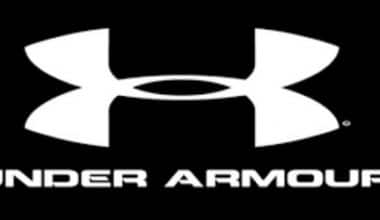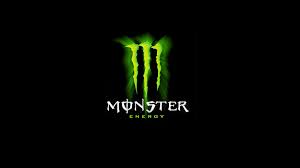Anyone interested in natural foods is familiar with the moniker “whole foods.” The bright green and white logo is as much a part of the company as agave syrup and lentil chips, and it hasn’t changed much since the first Whole Foods store opened in 1980 as one of the top supermarkets. But what is its origin? And what does it all mean in the end? Let’s find out…
Read Also: Columbia Pictures Logo: The Torch Lady & What She Represents
What Exactly is Whole Foods?
Whole Foods is an American grocery company that was founded in 1980 and now has over 500 locations throughout the country. The store has a lot of natural and organic groceries, as well as medicines, drinks, and even flowers.
Whole Foods Market’s History
Before delving into the whys and wherefores of the logo, a little history of the brand may be in order. Today, Whole Foods is one of the world’s largest retailers of natural and organic foods. With the support of Amazon’s Jeff Bezos, it is expected to grow much larger over the next decade. However, when it first opened its doors in 1978, it was little more than a neighborhood vegetarian natural foods store.
The store was started by John Mackey and Renee Lawson, who were friends. It used to be called Safeway. Two years later, Mackey and Lawson decided to expand the concept even further by collaborating with Craig Weller and Mark Skiles to open Austin’s first Whole Foods Market. With a large storefront of 10,500 square feet and 19 employees, the business was massive in comparison to most other health food stores of the time and immediately gained a dedicated following.
Read Also: REEBOK LOGO: Meaning, The Reason Reebok Uses the Triangle Logo and History
By 1984, the foursome of Mackey, Lawson, Weller, and Skiles had decided that Austin was too small for their ambitions: stores in Houston and Dallas soon followed, and by the 1990s, there seemed to be a Whole Foods store on almost every corner (something no doubt aided by the brand buying up almost every other viable health food store in operation, including Wellspring Grocery in North Carolina in 1991, Bread & Circus in Massachusetts and Rhode Island in 1992, and Mrs. Go in Massachusetts and Rhode Island in 1993). By the 2000s, it had expanded on an international scale, with locations in both Canada and the United Kingdom.
After many years of big growth, Whole Foods’ story took a new turn in 2017 when Amazon bought the company for a crazy $13.7 billion.
Since then, a few minor changes have occurred, including the discontinuation of the brand’s budget-friendly offspring, 365—a move that, according to Forbes, is indicative of Amazon’s brand business plan to ensure Whole Foods Market is viewed as a single source for organic, eco-conscious, ethically-sourced products.
Whole Foods Logo: Evolution
1980-1916
The Whole Foods Market brand logo stayed unaltered from its inception in 1980 through 2016. The logo was sleek, elegant, and bold enough to get the job done without being over the top. It had a simple dark green and white color scheme (designed, according to 1000logos.net, to show both the company’s goals of growth and freshness and its commitment to success and reliability).
There were a few things that made the logo stand out, including the stylized “O” in “Whole,” which was meant to look like a fruit with a leaf. The word “market” was capitalized and set in thick green underlining. Even though it looked simple at first, the logo did what it was supposed to do: set the business apart from its competitors and make it easy for customers to recognize.
1916 to Present
After serving the firm well for 36 years, the Whole Foods brand logo was redesigned in 2016. To be fair, it wasn’t a major change, and even the most loyal consumers might be forgiven for missing the opportunity. Whether anyone noticed it or not, change occurred. While the former logo was distinctive for, well, not being very notable, the new logo exudes fresh confidence, a boldness that the old design lacked, despite its beautiful sensibilities and basic stylishness.
These days, the logo is a bright, light green circle with the words Whole Foods Market in the center. The words’ capitalization remains, as does the fruity “O” at the heart of “whole.” The word “market” is now part of the logo. It appears right below the wordmark, where it used to be separated from the old logo. However, the font keeps the two parts fairly separate.
While the “Whole Foods” wordmark is created using a sophisticated serif typeface similar to Brighton Com Bold, the “Market” wordmark is created with a cleaner, more modern sans-serif typeface akin to Lawyer Gothic).
Whole Foods Logo: The 365 Logo
The 365 logo used to be an important part of the Whole Foods brand, even though the 365 stores are no longer open. The first logo was made by Nancy Frame. It was supposed to be a multicolored label with the words “Everyday Value” embossed on it.
According to themarketingsage.com, Frame created the logo with four boxes that represented summer, fall, winter, and spring—a clever little idea that played on customers’ desire to buy fresh, local food in season. For the numerals 365, Frame picked the casually elegant Cooper Light, which served to give the whole finish a light, joyful sense reminiscent of the 365 collections itself.
Like the main brand’s logo, the 365 emblems could be changed at any time. In January 2020, the rainbow label was replaced with a black background. Simultaneously, the “Everyday Value” tagline was changed to “Whole Foods Market,” which may or may not have been related to Whole Foods’ intention to convert all current 365 stores into ordinary Whole Foods stores.
The Whole Foods Logo: Font and Colors
Whole Foods Market’s logo has smooth, flowing lines and shapes that fit with its theme of being natural and eco-friendly. There are no sharp edges or “cubism” in it. The corners of the in-letter gaps have been straightened out as well.
The first two words are written in Brighton Com Bold, an elegant, bold typeface. The main distinction is in the letter “F,” which has a vertical serif on the horizontal line. The third word in the grocery chain’s name is written in a clear, clean sans-serif font evocative of Lawyer Gothic.
The logo’s green and white color scheme reflects the store’s commitment to the naturalness of its items. White represents purity and the absence of contaminants. Green symbolizes newness, environmental friendliness, and naturalness.
Whole Foods Review
Whole Foods Market is the largest American chain of natural foods stores, with locations in the United States, Canada, and the United Kingdom. Established in 1980 by John Mackey and Renee Lawson Hardy, the company is growing in popularity as well as in size.
Fruits and vegetables; meat, fish, and shellfish; eggs and dairy products; bread; snacks and frozen meals; cooked foods; and beverages, including wine and beer, are all available at supermarkets.
The company also made its own line of products, like pasta, butter, teas, and vinegar, under its own brand. All of the goods are high-quality and created using natural ingredients.
Some supermarkets have juice bars and cafes where people can buy and drink organic food and drinks.
After Amazon bought the company, it was able to grow its market by letting customers shop online and get products quickly and safely. Purchases can be made through the Whole Foods website or directly through the Amazon app. When you order online, there are more options, like sales and Amazon Prime Member Deals, where you can find high-quality items at good prices.
Whole Foods Logo: Early Years in History
In 1978, John Mackey and Renee Lawson borrowed $45,000 from family and friends to open SaferWay, a small natural foods store for vegetarians in Austin, Texas. The name is a joke on Safeway. After being evicted for stockpiling food in their flat, the two chose to live at the store. There was no shower stall because it was zoned for commercial usage, so they bathed using a water hose hooked to their dishwasher.
Two years later, Mackey and Lawson got together with Craig Weller and Mark Skiles to merge SaferWay with Skiles’s Clarksville Natural Grocery. This created the first Whole Foods Market, which sold meat. The business was huge compared to the typical health food store of the time, at 10,500 square feet (980 m2) and with a staff of 19.
Austin was ravaged by the worst flood in 70 years on May 25, 1981. The merchandise of Whole Foods was destroyed, and the majority of the equipment was damaged. Whole Foods Market has no insurance and suffered a $400,000 loss. Customers, neighbors, and staff all pitched in to help fix and clean up the mess. Creditors, vendors, and investors all pitched in to help with the recovery, and the store reopened 28 days later.
Expansion
Whole Foods Market began expanding from Austin in 1984, first to Houston and Dallas, and then to New Orleans with the purchase of The Whole Food Co. in 1988. In 1989, the company opened a store in Palo Alto, California, which put it on the West Coast.
On January 23, 1992, the company made its first public offering.
During the 1990s, the company grew quickly by buying other natural food stores: Wellspring Grocery in North Carolina, Bread & Circus in Massachusetts and Rhode Island (the banner was taken down in 2003), Mrs. Gooch’s Natural Foods Markets in Los Angeles, Bread of Life in Northern California, Fresh Fields Markets on the East Coast and in the Midwest, Bread of Life stores in Florida, Merchant of Vino stores in the Detroit area, and Nature’s Heartland.
Allegro Coffee Firm was purchased by the company in 1997. In 1999, the company established its 100th location in Torrance, California.
With further acquisitions, the corporation began its third decade. The first store to open in 2000 was Natural Abilities, which was known as Food for Thought in Northern California. Following the retirement of then-company president Chris Hitt and regional president Rich Cundiff of the Southern California region, John Mackey promoted A. C. Gallo, president of the Northeast region, and Walter Robb, president of the Northern California region, to co-COO and co-president.
Read Also: NIKE LOGO: The Story Behind Great Branding!!!
This led to the organization getting three new regional presidents and the start of a new era. David Lannon was named president of the Northeast region, Anthony Gilmore of the Southwest region, and Ron Meghan of the Northern California region. Whole Foods also relocated to Manhattan in 2001.
Later that year, Ken Meyer was named president of the newly created South region, and Whole Foods Market bought three Atlanta locations from Harry’s Farmers Market.
In 2002, the company began its North American expansion by opening its first location in Toronto, Ontario. Select Fish of Seattle was added to the company’s growing list of acquisitions in 2003.
It was claimed in late 2004 that Whole Foods had “cleared $188 million in profits in the last two years.”
Whole Foods launched its 80,000-square-foot (7,400 square meters) flagship store in downtown Austin in 2005. The company’s headquarters relocated above the store.
Whole Foods launched its first shop in Hawaii in 2008, and in the same year it opened a southeast distribution center in Braselton, Georgia, dubbed the company’s first “green distribution center.”
Whole Foods has sold stores to other companies in addition to making new purchases, such as the 2014 purchase of seven Dominick’s Finer Foods sites in Chicago.
In 2007, a subsidiary of the Los Angeles store Smart & Final Inc. bought 35 Henry’s Farmers Market and Sun Harvest Market stores for $166 million.
Read Also: STARBUCKS LOGO: Evolution, Significance, Branding Models & Tips
In September 2017, Whole Foods opened its second location in western New York in Amherst, a Buffalo suburb.
As part of a cost-cutting initiative, the firm announced in January 2017 that it would close three remaining regional kitchens in Everett, Landover, and Atlanta.
Amazon paid $13.7 billion for Whole Foods Market in June 2017.
It intends to allow Whole Foods customers who also have an Amazon Prime account to order groceries online and pick them up for free in-store.
Amazon announced plans to acquire several former Sears and Kmart locations from Sears Holdings, which filed for Chapter 11 bankruptcy protection on October 15, 2018, in order to facilitate expansion into previously unserved areas in January 2019. These empty spaces would be removed or modified to make way for future Whole Foods Market stores.
Whole Foods built its largest store in the Southeast in Midtown Atlanta in April 2019. The three-story store features a burger restaurant, Allegro Coffee, and a rooftop deck.
International Growth
Whole Foods Market is a grocery store in Vancouver, British Columbia, Canada.
Whole Foods first joined the Canadian market in Toronto in 2002.
In 2013, Whole Foods announced plans to open approximately 40 additional stores in Canada over time. There were 9 Whole Foods stores in Canada at the time.
Whole Foods had 467 stores in the United States as of January 2017, with the exception of 9 in the United Kingdom and 12 in Canada. Whole Foods said in January 2017 that it was abandoning plans from 2015 and 2016 to open stores in Calgary and Edmonton.
There were five in Greater Vancouver, five in Greater Toronto, and one each in Ottawa and Victoria. In March 2020, there were 487 stores in the United States, 14 in Canada, and 7 in the United Kingdom.
Whole Foods Market entered the UK in 2004 by acquiring seven Fresh & Wild outlets.
Read Also: INTERNATIONAL MARKETING Guide: 2022 Strategies, Types, & Examples
In June 2007, it launched its first full-size store, a total of 80,000 sq ft (7,400 m2) on three levels, on the site of the former Barkers department store on Kensington High Street in West London, which is now its largest store in the world. According to company executives, up to forty outlets could eventually appear across the UK.
Fresh & Wild had been cut to four stores, all in London, by September 2008, as a result of Whole Foods Market’s financial difficulties. The flagship Bristol location was terminated due to “unmet profitability targets.”
The UK subsidiary lost £36 million in the fiscal year that ended on September 28, 2008. This was because of a large impairment charge of £27 million and poor trading results because of growing worries about the global economy.
In 2011, however, global sales increased by 8% in each fiscal quarter as customers returned to the network. On November 16, 2011, the first Scottish store opened in Giffnock, Glasgow. Whole Foods Market Inc. now has seven Whole Foods Market locations: Camden Town, Clapham Junction, Kensington, Piccadilly Circus, Richmond, Stoke Newington, and Fulham. As part of a rationalization effort, Whole Foods closed its Giffnock and Cheltenham locations at the end of November 2017.
Wild Oats Markets Acquisition and Antitrust Complaint
Whole Foods Market, Inc. and Wild Oats Markets, Inc. announced a merger agreement on February 21, 2007, under which Whole Foods Market, Inc. would acquire Wild Oats Markets, Inc.’s outstanding common stock in a cash tender offer of $18.50 per share, or approximately $565 million based on fully diluted shares. Whole Foods Market, Inc. would also absorb Wild Oats Markets, Inc.’s current net debt of about $106 million as of September 2006.
The Federal Trade Commission (FTC) filed an administrative complaint on June 27, 2007, disputing Whole Foods Market, Inc.’s acquisition of Wild Oats Markets, Inc. According to the complaint, the FTC thought that the planned merger would violate federal antitrust laws by eliminating substantial competition between two close competitors in the operation of premium natural and organic stores nationally.
The FTC claimed that if the merger went through, Whole Foods Market would be able to boost prices while reducing quality and services. Whole Foods Market and Wild Oats have both declared that they will fiercely contest the FTC’s lawsuit, and a court hearing on the matter has been planned for July 31 and August 1, 2007.
Read Also: NETFLIX LOGO: Evolution & Tips on Digital Branding
CEO John Mackey started a blog on the matter [Archived 2015-02-14 at the Wayback Machine] to clarify his opposition to the FTC’s approach. Mackey’s other blogging was found out when the FTC published documents about the very opinionated comments he made under the name “Rahodeb” on the Whole Foods Yahoo! investment discussion board. When the Securities and Exchange Commission (SEC) found out that the Regulation Fair Disclosure Act of 2000 might have been broken, this became the subject of an investigation.
On April 25, 2008, the SEC exonerated Mackey of the accusations.
On July 29, 2008, the Trial Court of the Columbia Court of Appeals reversed the district court’s order authorizing the merger. The Court of Appeals concluded that “luxury natural and organic shops,” such as Whole Foods and Wild Oats, are a unique submarket of all grocers. The court decided that “mission-driven” consumers, or those who care a lot about doing the right thing for society and the environment, would be hurt by the merger because the FTC showed that Whole Foods planned to raise prices after the merger was done.
Whole Foods asked a regional competitor in Portland, New Seasons Market, for financial information, market studies, and plans for the future. This was done so that Whole Foods could appeal the verdict. Whole Foods agreed to sell the Wild Oats chain in 2009.
Amazon Subsidiary Since 2017
Whole Foods Market said in February 2017 that it would close nine shops and decrease its financial expectations for the year, as the natural-foods retailer faced growing competition and decreasing sales growth.
In late April 2017, Whole Foods reported its sixth consecutive quarter of declining sales and announced the closure of nine locations, two in Colorado and two in California, as well as ones in Georgia, Arizona, Utah, New Mexico, and Illinois. The income loss was attributed to decreasing foot traffic and competing supermarkets providing a comparable experience at a lesser cost.
Related Articles
- Brand Strategy: How to Develop an Effective Brand Strategy with Examples
- HOW TO GET A LOAN WITHOUT A JOB: Alternatives for People Without Jobs
- Hummus Brands: The Top 10 Healthy Hummus Brands in 2022
- WHOLE VS TERM LIFE INSURANCE: Which is Better?
- Top 10 Digital Marketing Companies in Nigeria (Updated!)






